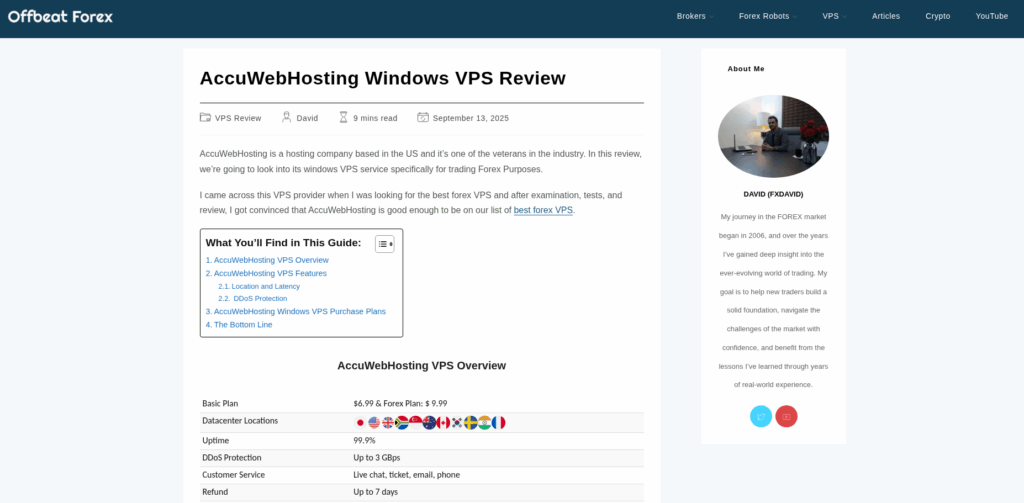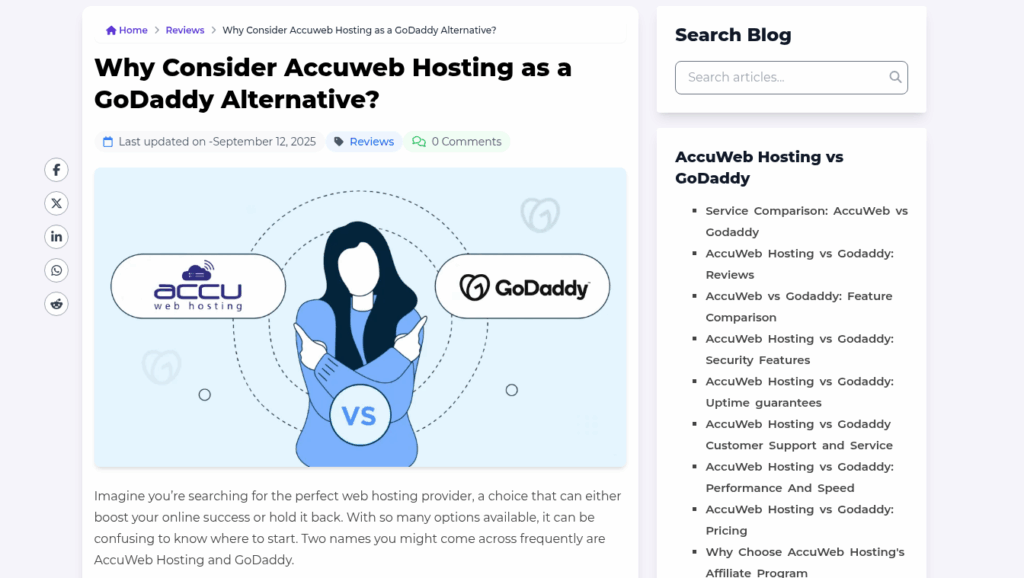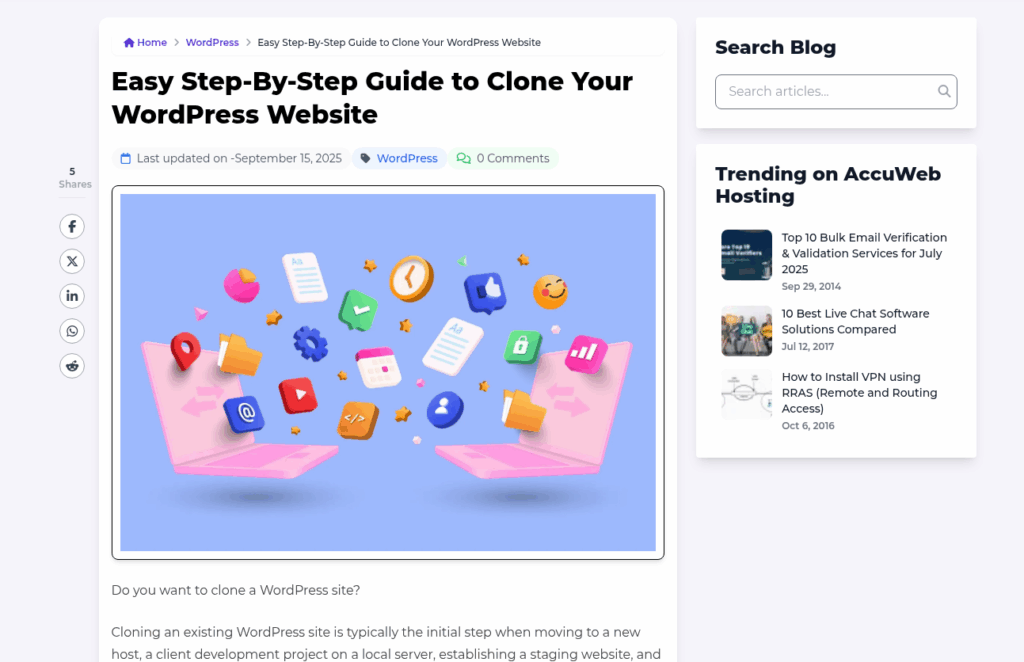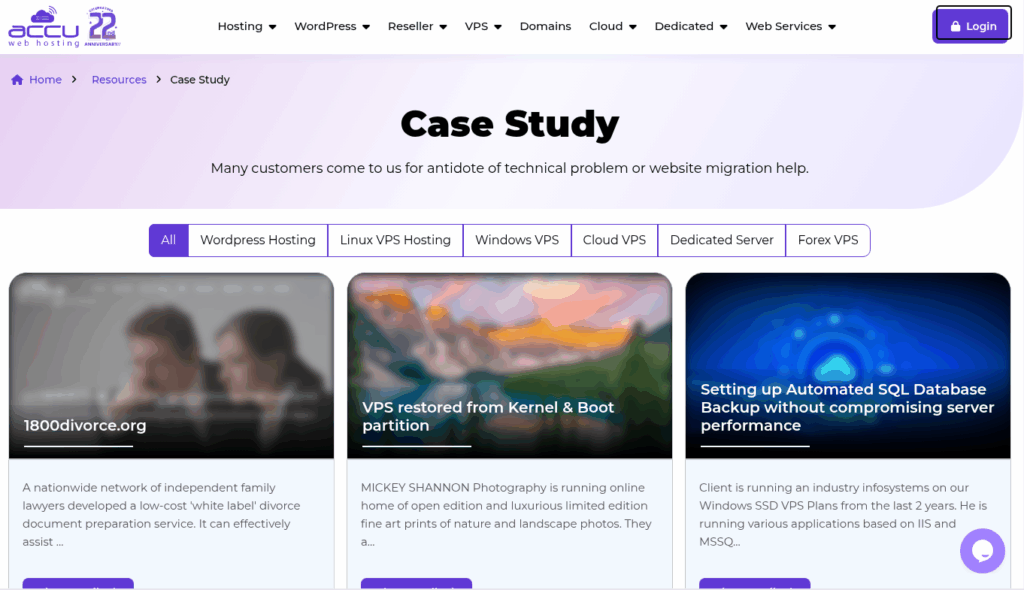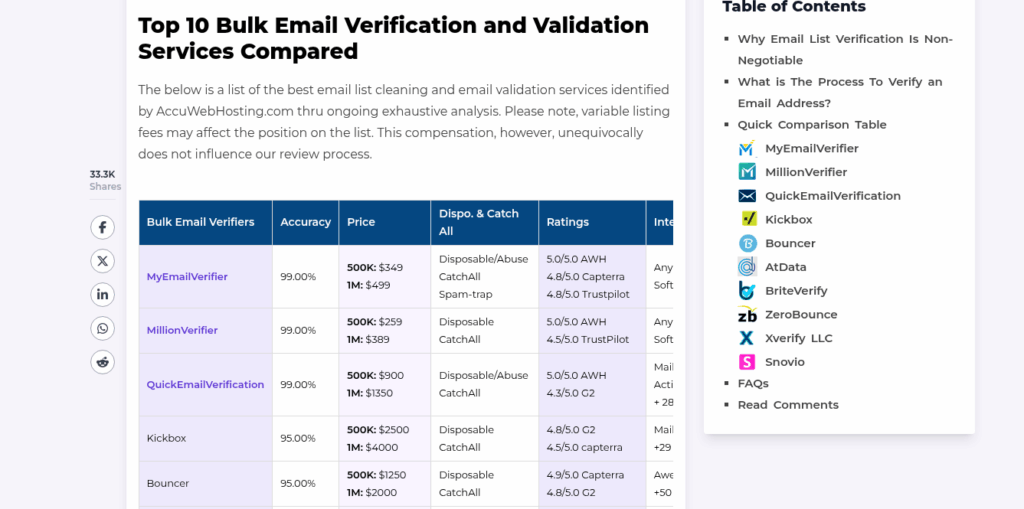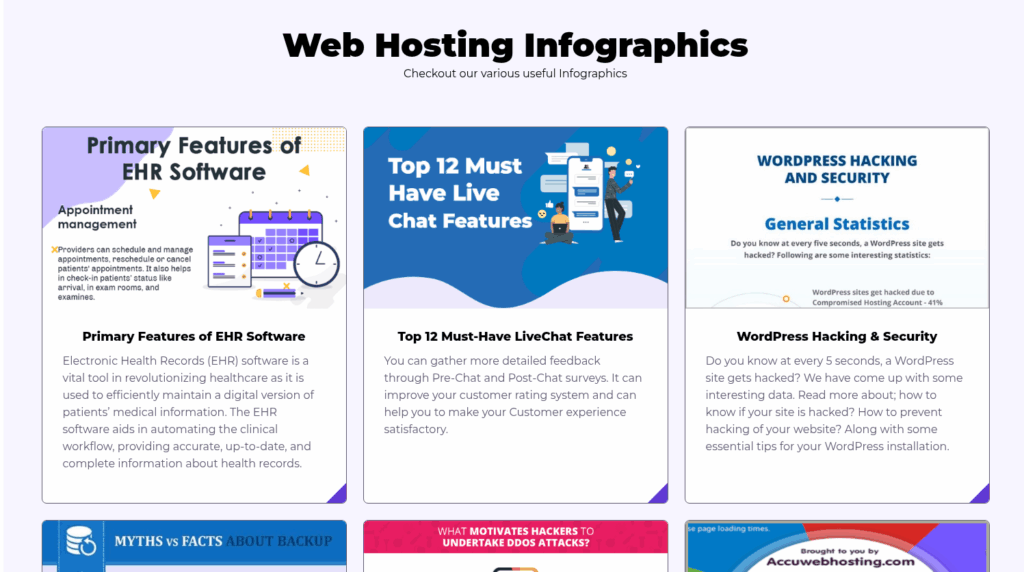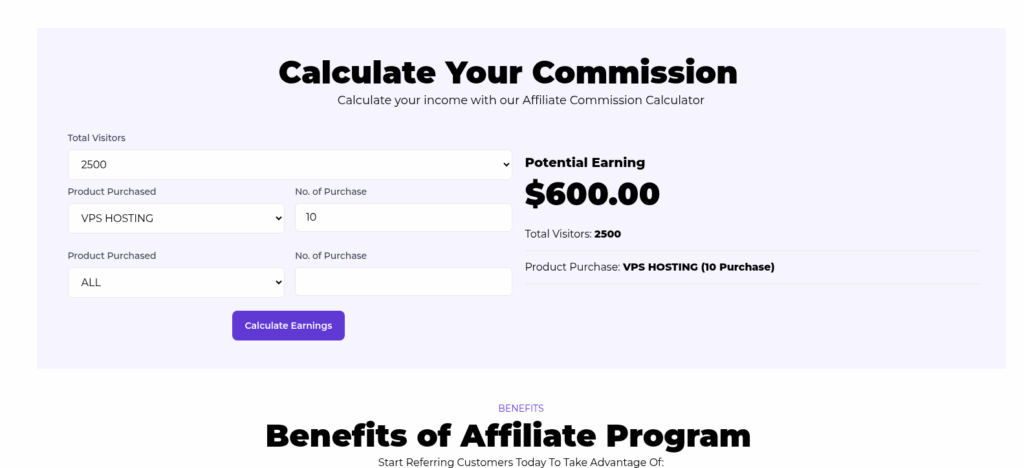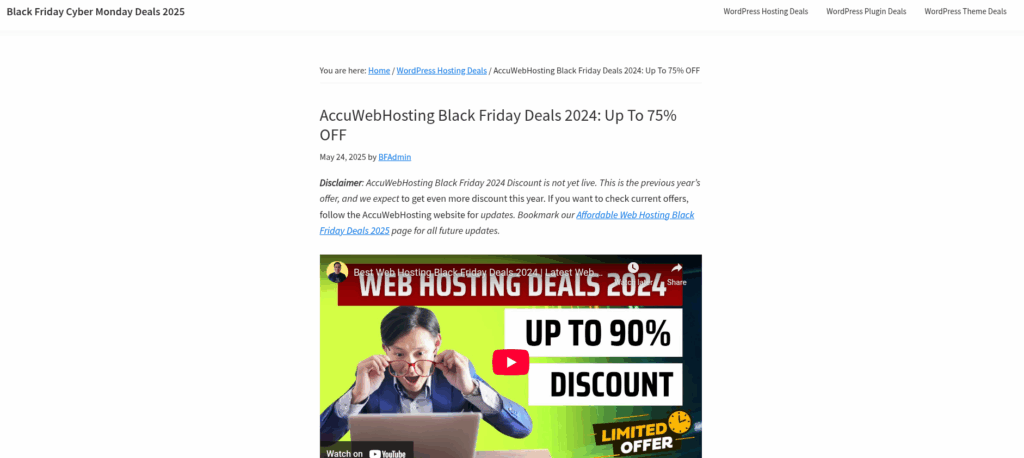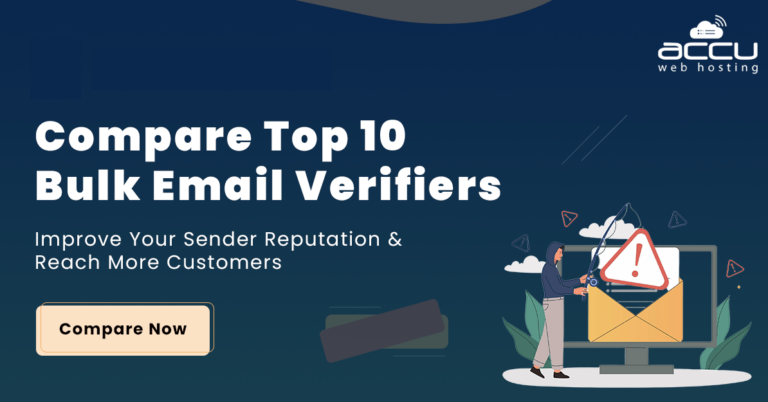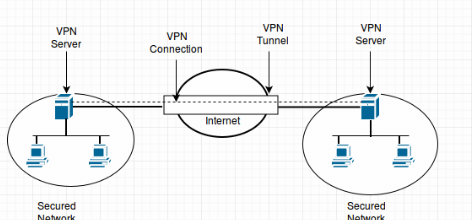13 Creative Affiliate Content Types That Boost Trust and Drive Sales
Why Most Affiliate Content Fails?
Here’s the hard truth:
Most affiliate marketers don’t have a content problem — they have a strategy problem.
They keep churning out the same type of blog posts: product reviews, top-10 lists, “best of” comparisons, and wonder why their conversions have flatlined.
It’s not that these formats don’t work anymore…
It’s that everyone is using them, the same titles, the same affiliate banners, even the same call-to-actions.
And your audience?
They’ve seen it all before.
Affiliate marketing isn’t about selling links.
It’s about building micro-trust at scale across blog posts, videos, reels, emails, and even data visualizations.
The affiliates who win now are the ones who create experiences, not content.
They help people make smarter buying decisions through storytelling, authority, and utility, not just “promotions.”
Back in 2016, you could publish a “Top 5 Hosting Providers” article, throw in a few screenshots, and call it a day.
Today?
That same content gets buried by Google’s Helpful Content updates, AI summaries, and user fatigue.
Modern audiences don’t just consume content; they compare, validate, and interact before they trust anything.
That means if you’re serious about affiliate marketing, you need a new playbook; one that combines depth, diversity, and authenticity.
What You’ll Learn Here?
In this guide, we’re going beyond the usual “write reviews and tutorials” advice.
You’ll discover some powerful content types used by top affiliates to attract, educate, and convert without sounding salesy or repetitive.
We’ll explore:
- How to create content that Google rewards and audiences trust.
- How to blend visual storytelling and SEO for maximum conversions.
- How to adapt your affiliate strategy to short-form, AI-assisted, and interactive formats.
Each content type you’ll read about comes with:
- The psychology behind why it works.
- Real-world implementation tips.
- Optimization ideas to help you earn more from every click.
Transform Your Content into Revenue
Earn up to $200 per sale, enjoy dual rewards (pay-per-click + pay-per-sale), and unlock unlimited earning potential with no caps.
Type – 1: THE FOUNDATION CONTENT
These are the bedrock formats that every affiliate strategy stands on.
They’re not flashy. They’re not trendy. But they’re what consistently convert (when done right).
1. Product Reviews
There’s a reason 88% of shoppers say they trust online reviews as much as personal recommendations.
But here’s the problem:
Most affiliate reviews sound like they were written by the product’s PR team, too polished, too positive, and too predictable.
The reviews that actually convert are imperfectly honest.
They highlight both strengths and weaknesses. They show results, screenshots, personal experience, maybe even a quick video snippet of “how it actually works.”
Think of it like being that brutally honest friend, the one who says,
“This software is great, but it took me an hour to set up; here’s how I fixed it.”
That’s how you build credibility.
Don’t just write a review; live it. Use the tool, take screenshots, and record setup steps. Google and users both reward first-hand experience (EEAT, remember?).
2. Comparison Posts
“X vs Y” posts are affiliate goldmines.
Why? Because the reader turns to them exactly when they are ready to buy, but just can’t decide which way to go.
If someone searches “Magento vs WooCommerce,” they’re not browsing; they’re choosing.
A great comparison post does three things:
- Clearly defines who each option is for.
- Compares features using visual tables or pros/cons lists.
- Ends with a confident, contextual recommendation (“If you’re a small creator, go with X. If you’re scaling fast, choose Y.”)
Add a “Who should use this?” box below each product. It adds empathy and subtly guides clicks.
3. Tutorials & Step-by-Step Guides
People buy from those who help them first.
Tutorials and how-to guides are your chance to teach before you pitch.
When someone learns something valuable from you, they remember it, and when they’re ready to buy, they trust your link.
Let’s say you’re promoting a WordPress backup plugin.
Instead of writing, “Top 5 Backup Tools,” write:
“How I Recovered My Entire Site in 10 Minutes Using X Plugin.”
It’s personal. It’s useful. It sells without sounding salesy.
Structure every guide like a mini-journey:
- Start with a problem (something breaks, something’s slow).
- Walk through the fix.
- End with the tool you used (your affiliate product).
4. Resource Hubs
Think of this as the “table of contents” for your niche.
If you’re serious about affiliate marketing, build a Resource Hub. A single page that organizes your best guides, tools, and recommendations.
It’s not just SEO-friendly; it keeps visitors circulating within your site instead of bouncing off after one article.
Example: If you’re in the productivity niche, your hub could include:
- “Best Time Management Tools”
- “Apps I Use Daily (and Why)”
- “My Workflow Setup: Hardware + Software”
Each link leads to a monetized post, but the hub feels like a free knowledge library.
Use visual cards or icons for each resource; it turns a boring list into a bingeable experience.
5. Case Studies
You know what sells better than “Top 10 Tools”?
A real story.
Case studies let you prove what worked. They build emotional connection and authority simultaneously.
Imagine this headline:
“How I Increased My Email Open Rate by 47% Using Tool X (Data Inside)”
Readers can’t resist numbers and transparency.
Inside, break down what you did:
- What the challenge was
- The tool or technique you tried
- The before-and-after data
- Lessons learned
That’s how you make an affiliate recommendation feel earned, not sponsored.
Add visuals – analytics screenshots, short clips, progress charts. Case studies without evidence are just stories.
6. Listicles
Image Source: AccuWeb Hosting
Yes, they’re everywhere. But listicles still work, because they’re scannable and snackable.
The key is depth, not quantity.
Instead of “Top 10 SEO Tools,” write “7 SEO Tools I Actually Use (And What Each Does Best).”
Make it sound human. Add small quirks:
“Tool A is lightning-fast but kinda pricey. Tool B’s cheaper but sometimes buggy.”
That mix of honesty and personality breaks through the monotony.
Start your listicle with a short story — why you created the list in the first place. It adds context and relatability.
Type – 2: VISUAL & INTERACTIVE CONTENT
These formats take your authority beyond the written word.
They’re visual, dynamic, and magnetic when executed right.
7. Video Reviews
If written reviews are powerful, video reviews are trust on steroids.
Why? Because video shows tone, emotion, and authenticity, things that text can’t fake.
A 2-minute clip showing you actually unboxing, testing, or using a product can do more to convert than a 1,500-word blog post ever will.
Example:
If you’re reviewing a software tool, screen-record the setup and key features.
If it’s a physical product, film the unboxing, show how it feels, works, and looks in real life.
End your video with a soft CTA, not a sales pitch:
“If you want to check it out, I’ll drop the link in the description.”
Viewers respect subtlety; algorithms reward engagement.
Embed your video in a related blog post. It boosts time-on-page, engagement, and ranking signals.
8. Webinars
Webinars aren’t just for SaaS companies anymore. Affiliates are using them to build real community and recurring income.
When you host a webinar, you’re not just promoting a product; you’re educating.
You’re building context and trust before the conversion ever happens.
Example:
- Teach a topic like “How to Start a Blog That Earns in 30 Days.”
- During the session, demo a hosting service or SEO tool you use (affiliate).
- Offer a bonus (template, eBook, checklist) for those who register through your link.
This format turns cold viewers into warm leads, and warm leads into repeat buyers.
Bonus: Record your webinar and repurpose it:
- Publish snippets on YouTube
- Use highlights as Reels/TikToks
- Turn the Q&A section into a blog post
Evergreen content, endless reach.
9. Infographics
Infographics remain one of the most shared content types on the internet.
Because they’re quick to digest, visually attractive, and easy to repost. This results in more backlinks and visibility for you.
If your blog is data-heavy or insight-driven, turn stats into visuals like:
“Affiliate Marketing in 2025 – Key Stats & Trends”
“5 Steps to Start Earning Passive Income (Visual Guide)”
Add your affiliate products naturally. For instance, in a “Tools I Recommend” section or callout boxes.
Make your infographics embeddable. Offer an HTML embed code with your site URL attached.
Every time someone shares it, you gain SEO juice.
10. Interactive Tools & Calculators
Want visitors to stay longer and convert more?
Give them something they can use.
Interactive tools, quizzes, or calculators turn passive readers into active participants.
Tools like:
- “Affiliate Income Calculator” (estimate potential earnings)
- “Best Tool Finder Quiz” (recommend based on needs)
- “ROI Calculator for [Product Name]”
These tools aren’t just fun; they create personalized results, which are perfect opportunities to suggest products that fit the user’s outcome.
End every interactive result with a recommendation block:
“Based on your answers, here’s the tool we suggest. Try it for free.”
→ Affiliate link.
→ Problem solved.
11. Podcasts
While visuals build attention, voice builds intimacy.
Podcasts give you long-form space to educate, share stories, and introduce affiliate products naturally as part of your experience.
For instance, if you run a “Digital Marketing Hacks” podcast:
- Discuss tools you actually use.
- Invite affiliate brand reps for interviews.
- Mention exclusive promo codes for listeners.
The key is conversation over promotion, make every mention sound like part of the story, not a script.
Always provide show notes with links and timestamps.
This helps with SEO and gives listeners easy access to your affiliate resources.
Type – 3: ADVANCED & EVERGREEN CONTENT
This is where affiliate marketing graduates from “posting links” to “running a content business.”
These formats require more planning, but they pay back in terms of leverage, including increased SEO visibility, email subscribers, and automated conversions.
12. Seasonal Campaigns
Ever noticed how some affiliates make half their income in just two months of the year?
That’s the power of timing.
People search differently during holidays, festivals, and sales events, and those moments are goldmines.
Think about:
- “Best Tech Gifts for Father’s Day”
- “Top Black Friday Hosting Deals”
- “Must-Have Travel Accessories for Summer 2025”
These posts perform like rockets, fast traffic, high conversions, especially if you optimize early.
Build a seasonal content calendar.
Publish 30–45 days before the event so Google has time to index and rank you.
Then refresh and reuse it next year.
Add scarcity or countdown elements: “Offer valid until Dec 24!” – because urgency sells.
And yes, keep your affiliate links updated each year. It’s shocking how many forget that part and lose commissions.
13. Email Series
Social media changes. Algorithms shift. But your email list? That’s yours forever.
Email marketing is still one of the highest-converting channels for affiliates. Some report ROI as high as 3600% (yes, really).
But the trick isn’t blasting links. It’s storytelling.
Create a sequence like:
- Welcome Email: Who you are, why you care, and how you help.
- Value Emails (2–3): Tips, tutorials, relatable experiences.
- Soft Pitch: “By the way, here’s the tool I use for this…” (affiliate link).
- Follow-Up: Address objections, share success stories, build trust.
You’re not selling. You’re helping people make smarter choices.
And that’s what makes affiliates last.
Use tools like ConvertKit or Beehiiv to segment subscribers by interest.
Send product-specific recommendations instead of generic blasts. Personalization = profit.
Bringing It All Together
Let’s zoom out for a second.
Affiliate marketing isn’t about “finding products and pushing links.” It’s about helping people make better choices through content that educates, entertains, and engages.
| Tier | Focus | Content Types | Goal |
| 1. Foundational | Authority & Search | Product Reviews, Comparisons, How-to Guides, Listicles, Tutorials, FAQs | Build trust & SEO visibility |
| 2. Visual & Interactive | Engagement & Experience | Video Reviews, Webinars, Infographics, Interactive Tools, Podcasts | Keep visitors engaged longer |
| 3. Evergreen & Advanced | Longevity & Conversion | Seasonal Campaigns, Email Series, Checklists, Templates, Case Studies | Drive consistent passive income |
Each layer supports the next, a full-stack content ecosystem for affiliates.
And the best part? You don’t need to master all at once.
Start small. Build steadily. Stack wins.
Play the Long Game
You know, affiliate marketing isn’t a sprint; it’s a marathon with compounding rewards.
The creators making $10K–$50K/month aren’t necessarily the most talented; they’re the most consistent.
They treat every blog post, every video, every email as an asset that grows in value over time.
So don’t chase viral hits. Build a content system.
Use these formats strategically.
That’s how you build an affiliate brand that lasts.
And if you’re just getting started or looking for the right affiliate platform to partner with, you can join AccuWeb Hosting’s Affiliate Program today.
It’s free, beginner-friendly, and pays generous commissions for every referral.
You’ll get dedicated support, instant tracking, and real earning potential, not just clicks.
Join the AccuWeb Affiliate Program and turn your content into a business that earns even when you’re offline.
Quick Answers for Affiliate Marketing Content Types
Q1: What type of content works best for affiliate marketing?
Product reviews, comparison articles, tutorials, videos, and listicles consistently drive engagement and conversions.
Q2: How can I increase trust with my audience?
Provide honest reviews, highlight pros & cons, share real results, and use case studies.
Q3: Should I use videos for affiliate marketing?
Yes, video content boosts retention, engagement, and click-throughs significantly compared to text alone.
Q4: Can seasonal or trending content help in affiliate marketing?
Absolutely. Holiday guides, seasonal deals, and trending topics attract timely traffic and improve conversions.
Q5: How important is SEO for affiliate content?
Very. Optimized blog posts, landing pages, and guest posts drive organic traffic and improve affiliate sales.
Q6: Can I combine multiple content types?
Yes. Using a mix of reviews, tutorials, webinars, email campaigns, and social media content maximizes reach and income.
About the Author: Jason-Pat
Founder & CTO at AccuWebHosting.com. He shares his web hosting insights at AccuWebHosting blog. He mostly writes on the latest web hosting trends, WordPress, storage technologies, Windows and Linux hosting platforms.

